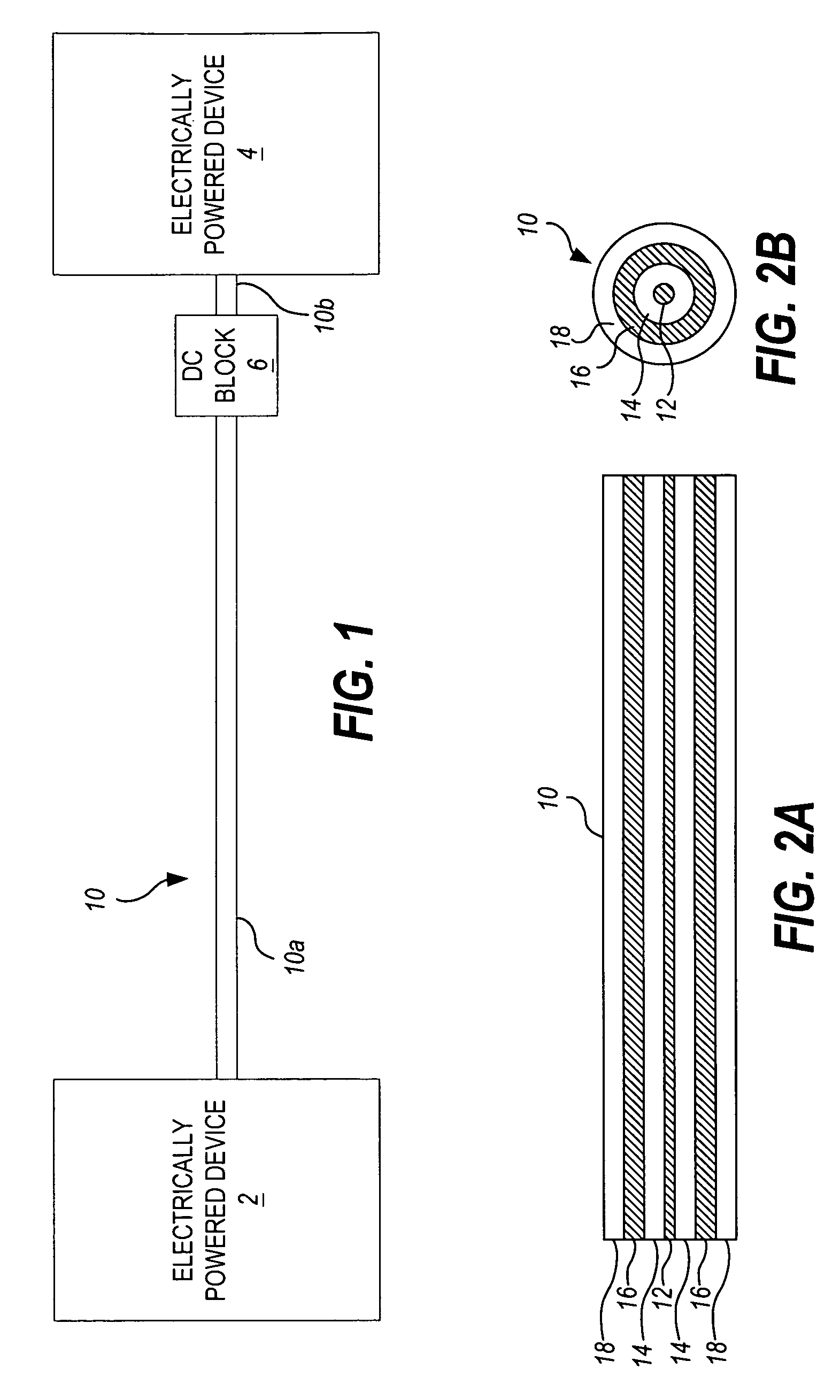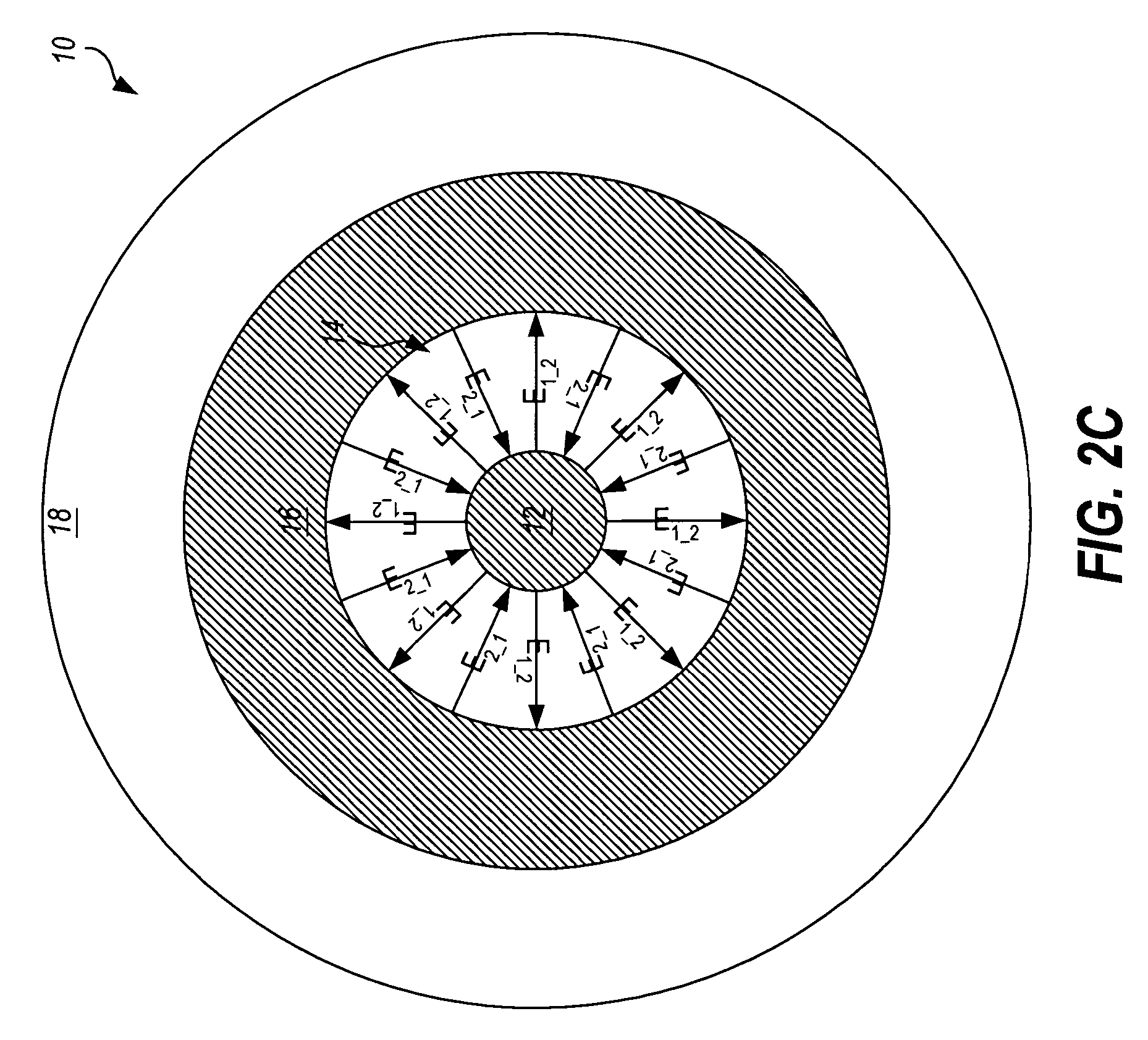Coaxial DC block
a dc block and coaxial cable technology, applied in the direction of coaxial cables/analogue cables, cables with twisted pairs/quads, electrical equipment, etc., can solve the problems of low frequency noise, low frequency noise introduction, configuration problems, etc., to reduce interference, increase capacitance, and reduce the effect of external interferen
- Summary
- Abstract
- Description
- Claims
- Application Information
AI Technical Summary
Benefits of technology
Problems solved by technology
Method used
Image
Examples
Embodiment Construction
[0042]Turning now to the drawings, FIG. 1 illustrates a coaxial cable connection between two devices. A coax DC block is inserted in series along the coaxial cable connection in order to eliminate DC and low frequency voltage or current components while allowing high frequency signals.
[0043]FIG. 2A is a cut-away view of a length of coaxial cable 10, and FIG. 2B is a view of a cross-section of the coaxial cable 10 of FIG. 2A. As shown therein, the coaxial cable 10 is formed of concentric inner and outer conductors 12 and 16, a dielectric 14 sandwiched between the inner conductor 12 and outer conductor 16, and an insulator 18 concentrically surrounding the outer conductor 16.
[0044]FIG. 2C is an electric field diagram illustrating the electric fields generated by a signal propagating along the coaxial cable 10. According to standard electromagnetic field theory, the electric field Ei generated by current flowing in one direction (e.g., into the page) on the inner conductor 12 radiates ...
PUM
| Property | Measurement | Unit |
|---|---|---|
| frequency | aaaaa | aaaaa |
| capacitance | aaaaa | aaaaa |
| frequency | aaaaa | aaaaa |
Abstract
Description
Claims
Application Information
 Login to View More
Login to View More - R&D
- Intellectual Property
- Life Sciences
- Materials
- Tech Scout
- Unparalleled Data Quality
- Higher Quality Content
- 60% Fewer Hallucinations
Browse by: Latest US Patents, China's latest patents, Technical Efficacy Thesaurus, Application Domain, Technology Topic, Popular Technical Reports.
© 2025 PatSnap. All rights reserved.Legal|Privacy policy|Modern Slavery Act Transparency Statement|Sitemap|About US| Contact US: help@patsnap.com



